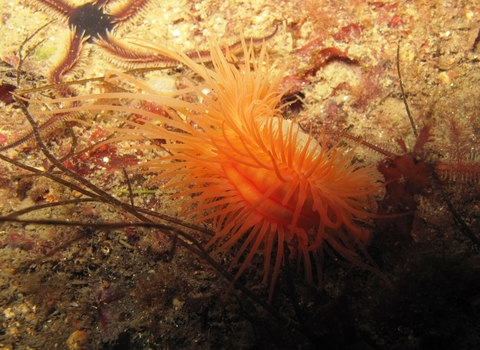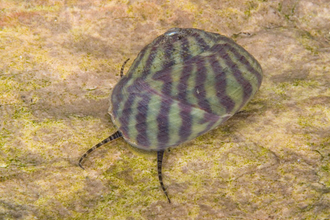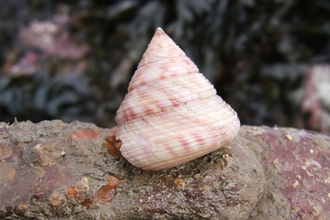
Flame shell ©Polly Whyte/Earth in Focus
Flame shell
It's easy to see where this stunning bivalve got its name from - the bright orange tentacles emerging from the shell really do look like flames!
Scientific name
Limaria hiansWhen to see
January to DecemberSpecies information
Category
Statistics
Length: Up to 4cmConservation status
File shell beds are Priority Habitat under the UK Post-2010 Biodiversity Framework and a priority marine feature in Scotland's seas. Nature Conservation Marine Protected Areas are designated to protect flame shells in Scottish waters.




